Enhancing Contrast of Dark Satellite Images Based on Fuzzy Semi-Supervised Clustering and an Enhancement Operator
Abstract
:1. Introduction
- Introducing a new enhancement operator designed explicitly for dark remote sensing images.
- Providing a new algorithm for modifying the gray level of an image based on clustering.
2. Methodology
2.1. Principle of Using Fuzzy Logic for Image Enhancement
2.2. The Algorithm of Fuzzy Semi-Supervised Grouping
- m: the fuzzy parameter
- C: the number of groups
- N: the number of all data points
- µkj: membership value of the kth pixel of jth cluster
- Xk: the kth data point
- Vj: the center of group j.
- :
- :
| Algorithm 1 The standard fuzzy semi-supervised grouping algorithm. | |
| Input | Dataset X has group number C, N elements, threshold , the maximum number of loops maxStep > 0, and the matrix of adding membership . |
| Output | Matrix U and group centers V. |
| SFSSG | |
| 1: | t = 0 |
| 2: | Randomized initialization ; () |
| 3: | Loop |
| 4: | ++t |
| 5: | Calculate (; ) by Formula (5) with or Formula (6) with . |
| 6: | Calculate () by Formula (4) |
| 7: | Until t > maxStep or |
3. Proposed Method
- Step 1: Transforming , , according to the operator of the dark image object enhancement (ODIOE) (details in Section 3.1):Therefore:
- Step 2: Clustering SSSFG with the image (, , ) to obtain c clusters with centers Vi (i = 1, …, c) and the member matrix .
- Step 3: Calculating upper bound, lower bound according to each cluster (details in Section 3.2).
- Step 4: Aggregate gray levels from all clusters according to the formula:wherein ICEC is the algorithm of cluster-based gray-level transformation (details in Section 3.3).
- Step 5: Transforming () according to the operator ODIOE (details in Section 3.1):Therefore:
3.1. The Operator of Dark Image Object Enhancement (ODIOE)
- Step 1: Gray level transformation to domain [0, 1] according to the ODIOE as follows:Therefore:
- Step 2: Transforming , , according to the formula:wherein: .
- ✓
- If g approaches 0, then f(g) approaches 2∗g.
- ✓
- If g approaches 1, then f(g) approaches g.
- ✓
- So, if considering the domain [0, 255], it can be seen that:
- ✓
- If g approaches 0, then f(g) approaches 2∗g.
- ✓
- If g approaches 255, then f(g) approaches g.
- ✓
- Step 3: Transforming , , to domain [0, 255] according to the formula:Therefore:
3.2. Calculating Upper Bound and Lower Bound According to Group
3.3. The Algorithm Based on the Cluster for Enhancing the Image Contrast
- : upper bound of the cluster ith, called up here.
- : upper bound of the cluster ith, called low here.
- : centroid of the cluster ith, called V here.
- Step 1: If g < low then g = low
- Step 2: If g > up then g = up
- Step 3: Calculating d:
- Step 4: Calculating b:
- Step 5: Calculating :
- Step 6: Calculating :
- Step 7: Calculating gray output level:
3.4. Main Contributions and Meaning of the Algorithm
4. Results and Discussion
5. Conclusions
- The development of a novel algorithm that combines fuzzy semi-supervised clustering and an enhancement operator to improve the contrast of dark satellite images.
- The utilization of group enhancement techniques, reducing the variability of pixel intensity values and improving the homogeneity of the enhanced images.
- The development of the RSIECE method, which outperforms the other two approaches (Ying and PGCFDM) in terms of various image quality indices, including the mean index, the standard deviation index, the entropy index, and the IL-NIQE index.
- The development of a method (RSIECE) that also improves the homogeneity of the enhanced images compared to the results of the Ying and PGCFDM methods.
- The demonstration of the potential of the RSIECE algorithm as a valuable tool for improving the quality of satellite images.
Author Contributions
Funding
Data Availability Statement
Conflicts of Interest
References
- Sudhavani, G.; Madhuri, G.; Rao, P.V.; Prasad, K.S. Removing Gaussian Noise from Color Images by Varying the Size of Fuzzy Filters. Int. J. Comput. Appl. 2013, 72, 14–20. [Google Scholar]
- Sudhavani, G.; Madhuri, G.; Rao, P.V.; Prasad, K.S. Additive noise removal for color images using fuzzy filters. Int. J. Comput. Sci. Eng. 2013, 3, 1–10. [Google Scholar] [CrossRef]
- Yoon, B.-W.; Song, W.-J. Image contrast enhancement based on the generalized histogram. J. Electron. Imaging 2007, 16, 033005. [Google Scholar] [CrossRef]
- Singh, S.S.; Devi, D.H.M.; Singh, T.T.; Singh, O.I. A New Easy Method of Enhancement of Low Contrast Image using Spatial Domain. Int. J. Comput. Appl. 2012, 40, 32–34. [Google Scholar]
- Sharo, T.A.; Raimond, K. A Survey on Color Image Enhancement Techniques. IOSR J. Comput. Eng. 2013, 3, 20–24. [Google Scholar] [CrossRef]
- Hassanien, A.E.; Badr, A. A Comparative Study on Digital Mammography Enhancement Algorithms Based on Fuzzy Theory. Stud. Inform. Control 2003, 12, 21–32. [Google Scholar]
- Cheng, H.D.; Xue, M.; Shi, X.J. Contrast enhancement based on a novel homogeneity measurement. Pattern Recognit. 2003, 36, 2687–2697. [Google Scholar] [CrossRef]
- Yugander, P.; Tejaswini, C.H.; Meenakshi, J.; Kumar, K.S.; Varma, B.V.N.S.; Jagannath, M. MR Image Enhancement using Adaptive Weighted Mean Filtering and Homomorphic Filtering. Procedia Comput. Sci. 2020, 167, 677–685. [Google Scholar] [CrossRef]
- Dimililer, K.; İlhan, A. Effect of Image Enhancement on MRI Brain Images with Neural Networks. Procedia Comput. Sci. 2016, 102, 39–44. [Google Scholar] [CrossRef] [Green Version]
- Maini, R.; Aggarwal, H. A Comprehensive Review of Image Enhancement Techniques. arXiv 2010. [Google Scholar] [CrossRef]
- Ghosh, S.K.; Biswas, B.; Ghosh, A. A novel Approach of Retinal Image Enhancement using PSO System and Measure of Fuzziness. Procedia Comput. Sci. 2020, 167, 1300–1311. [Google Scholar] [CrossRef]
- Kandhway, P.; Bhandari, A.K.; Singh, A. A novel reformed histogram equalization based medical image contrast enhancement using krill herd optimization. Biomed. Signal Process. Control 2020, 56, 101677. [Google Scholar] [CrossRef]
- Jia, C.; Chuyi, L.; Weiyu, Y. Adaptive Image Enhancement Based on Artificial Bee Colony Algorithm. In Proceedings of the CEIE 2016, Durrës, Albania, 28–30 October 2016; pp. 689–695. [Google Scholar] [CrossRef] [Green Version]
- Malika; Singh, R. Artificial Bee Colony Based Image Enhancement For Color Images In Discrete Wavelet Domain. Int. Res. J. Eng. Technol. 2017, 4, 443–448. [Google Scholar]
- Iqbal, M.; Ali, S.S.; Riaz, M.M.; Ghafoor, A.; Ahmad, A. Color and white balancing in low-light image enhancement. Optik 2020, 209, 164260. [Google Scholar] [CrossRef]
- Liu, K.; Tian, Y. Research and analysis of deep learning image enhancement algorithm based on fractional differential. Chaos Solitons Fractals 2020, 131, 109507. [Google Scholar] [CrossRef]
- Xie, J.; Bian, H.; Wu, Y.; Zhao, Y.; Shan, L.; Hao, S. Semantically-guided low-light image enhancement. Pattern Recognit. Lett. 2020, 138, 308–314. [Google Scholar] [CrossRef]
- Liang, Z.; Wang, Y.; Ding, X.; Mi, Z.; Fu, X. Single underwater image enhancement by attenuation map guided color correction and detail preserved dehazing. Neurocomputing 2021, 425, 160–172. [Google Scholar] [CrossRef]
- Fu, X.; Cao, X. Underwater image enhancement with global—Local networks and compressed-histogram equalization. Signal Process. Image Commun. 2020, 86, 115892. [Google Scholar] [CrossRef]
- Dhal, K.G.; Das, A.; Ghoshal, N.; Das, S. Variance Based Brightness Preserved Dynamic Histogram Equalization for Image Contrast Enhancement. Pattern Recognit. Image Anal. 2018, 28, 747–757. [Google Scholar] [CrossRef]
- Gu, Z.; Ju, M.; Zhang, D. A novel Retinex image enhancement approach via brightness channel prior and change of detail prior. Pattern Recognit. Image Anal. 2017, 27, 234–242. [Google Scholar] [CrossRef]
- Krylov, A.S.; Nasonova, A.V.; Nasonov, A.A. Image enhancement by non-iterative grid warping. Pattern Recognit. Image Anal. 2016, 26, 161–164. [Google Scholar] [CrossRef]
- Chao, G.C.; Lee, S.S.; Lai, H.C. Fingerprint image enhancement and postprocessing based on the directional fields. Pattern Recognit. Image Anal. 2007, 17, 560–566. [Google Scholar] [CrossRef]
- Singh, H.; Kumar, A.; Balyan, L.K.; Singh, G.K. Swarm intelligence optimized piecewise gamma corrected histogram equalization for dark image enhancement. Comput. Electr. Eng. 2018, 70, 462–475. [Google Scholar] [CrossRef]
- Ying, Z.; Li, G.; Ren, Y.; Wang, R.; Wang, W. A New Image Contrast Enhancement Algorithm Using Exposure Fusion Framework. In Proceedings of the CAIP 2017, Ystad, Sweden, 22–24 August 2017; pp. 36–46. [Google Scholar] [CrossRef]
- Li, M.; Liu, J.; Yang, W.; Sun, X.; Guo, Z. Structure-Revealing Low-Light Image Enhancement Via Robust Retinex Model. IEEE Trans. Image Process. 2018, 27, 2828–2841. [Google Scholar] [CrossRef] [PubMed]
- Zhang, Q.; Nie, Y.; Zheng, W.-S. Dual Illumination Estimation for Robust Exposure Correction. Comput. Graph. Forum 2019, 38, 243–252. [Google Scholar] [CrossRef] [Green Version]
- Moran, S.; Marza, P.; McDonagh, S.; Parisot, S.; Slabaugh, G. DeepLPF: Deep Local Parametric Filters for Image Enhancement. In Proceedings of the CVPR 2020, Seattle, WA, USA, 13–19 June 2020; pp. 12823–12832. [Google Scholar] [CrossRef]
- Wang, R.; Zhang, Q.; Fu, C.W.; Shen, X.; Zheng, W.S.; Jia, J. Underexposed Photo Enhancement Using Deep Illumination Estimation. In Proceedings of the CVPR 2019, Long Beach, CA, USA, 15–20 June 2019; pp. 6842–6850. [Google Scholar] [CrossRef]
- Zhang, Y.; Zhang, J.; Guo, X. Kindling the Darkness: A Practical Low-light Image Enhancer. In Proceedings of the 27th ACM International Conference on Multimedia, Nice, France, 14–18 August 2021; pp. 1632–1640. [Google Scholar] [CrossRef]
- Guo, C.; Li, C.; Guo, J.; Loy, C.C.; Hou, J.; Kwong, S.; Cong, R. Zero-Reference Deep Curve Estimation for Low-Light Image Enhancement. arXiv 2020. [Google Scholar] [CrossRef]
- Xu, K.; Yang, X.; Yin, B.; Lau, R.W.H. Learning to Restore Low-Light Images via Decomposition-and-Enhancement. In Proceedings of the CVPR 2020, Seattle, WA, USA, 13–19 June 2020; pp. 2278–2287. [Google Scholar] [CrossRef]
- Yang, W.; Wang, S.; Fang, Y.; Wang, Y.; Liu, J. From Fidelity to Perceptual Quality: A Semi-Supervised Approach for Low-Light Image Enhancement. In Proceedings of the CVPR 2020, Seattle, WA, USA, 13–19 June 2020; pp. 3060–3069. [Google Scholar] [CrossRef]
- Haris, M.; Shakhnarovich, G.; Ukita, N. Space-Time-Aware Multi-Resolution Video Enhancement. arXiv 2020. [Google Scholar] [CrossRef]
- Zeng, H.; Cai, J.; Li, L.; Cao, Z.; Zhang, L. Learning Image-Adaptive 3D Lookup Tables for High Performance Photo Enhancement in Real-Time. IEEE Trans. Pattern Anal. Mach. Intell. 2022, 44, 2058–2073. [Google Scholar] [CrossRef]
- Liu, R.; Ma, L.; Zhang, J.; Fan, X.; Luo, Z. Retinex-inspired Unrolling with Cooperative Prior Architecture Search for Low-light Image Enhancement. In Proceedings of the CVPR 2021, Virtual, 19–25 June 2021; pp. 10556–10565. [Google Scholar] [CrossRef]
- Xia, Z.; Gharbi, M.; Perazzi, F.; Sunkavalli, K.; Chakrabarti, A. Deep Denoising of Flash and No-Flash Pairs for Photography in Low-Light Environments. In Proceedings of the CVPR 2021, Virtual, 19–25 June 2021; pp. 2063–2072. [Google Scholar] [CrossRef]
- Moseley, B.; Bickel, V.; López-Francos, I.G.; Rana, L. Extreme Low-Light Environment-Driven Image Denoising over Permanently Shadowed Lunar Regions with a Physical Noise Model. In Proceedings of the CVPR 2021, Virtual, 19–25 June 2021; pp. 6313–6323. [Google Scholar] [CrossRef]
- Zhang, F.; Li, Y.; You, S.; Fu, Y. Learning Temporal Consistency for Low Light Video Enhancement from Single Images. In Proceedings of the CVPR 2021, Virtual, 19–25 June 2021; pp. 4965–4974. [Google Scholar] [CrossRef]
- Sharma, A.; Tan, R.T. Nighttime Visibility Enhancement by Increasing the Dynamic Range and Suppression of Light Effects. In Proceedings of the CVPR 2021, Virtual, 19–25 June 2021; pp. 11972–11981. [Google Scholar] [CrossRef]
- Ngo, L.T.; Mai, D.S.; Pedrycz, W. Semi-supervising Interval Type-2 Fuzzy C-Means clustering with spatial information for multi-spectral satellite image classification and change detection. Comput. Geosci. 2015, 83, 1–16. [Google Scholar] [CrossRef]
- Son, L.H.; Tuan, T.M. Dental segmentation from X-ray images using semi-supervised fuzzy clustering with spatial constraints. Eng. Appl. Artif. Intell. 2017, 59, 186–195. [Google Scholar] [CrossRef]
- Singh, H.; Kumar, A.; Balyan, L.K.; Singh, G.K. A novel optimally weighted framework of piecewise gamma corrected fractional order masking for satellite image enhancement. Comput. Electr. Eng. 2019, 75, 245–261. [Google Scholar] [CrossRef]
- Singh, H.; Kumar, A.; Balyan, L.K.; Lee, H.N. Spatial Entropy Quartiles-Based Texture-Aware Fractional-Order Unsharp Masking for Visibility Enhancement of Remotely Sensed Images. IEEE Trans. Syst. Man Cybern. Syst. 2022, 52, 2275–2288. [Google Scholar] [CrossRef]
- Sudhavani, G.; Srilakshmi, M.; Rao, P.V.; Prasad, K.S. Comparison of Fuzzy Contrast Enhancement Techniques. Int. J. Comput. Appl. 2014, 95, 26–31. [Google Scholar] [CrossRef]
- Zhang, L.; Zhang, L.; Bovik, A.C. A Feature-Enriched Completely Blind Image Quality Evaluator. IEEE Trans. Image Process. 2015, 24, 2579–2591. [Google Scholar] [CrossRef] [Green Version]


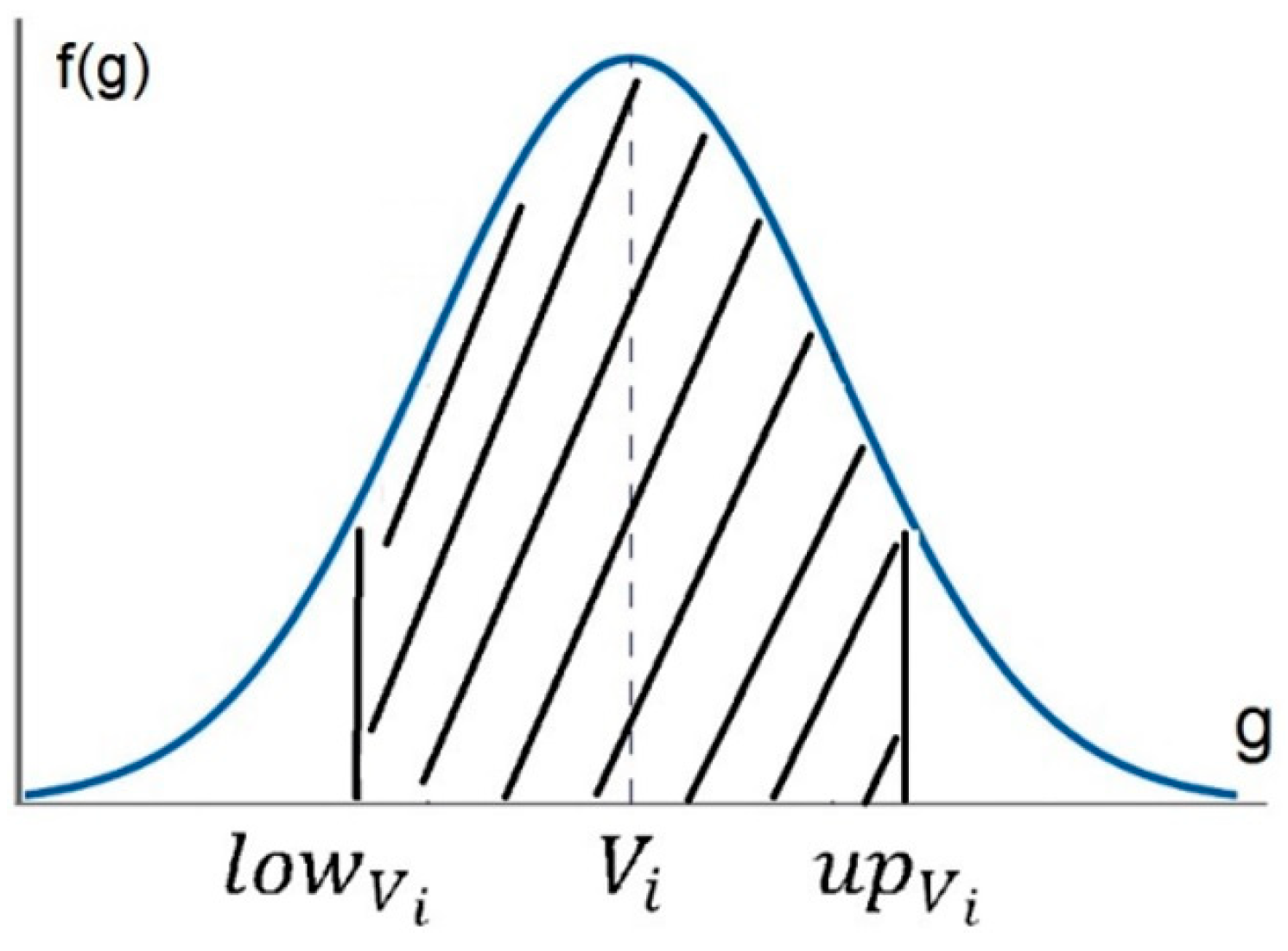

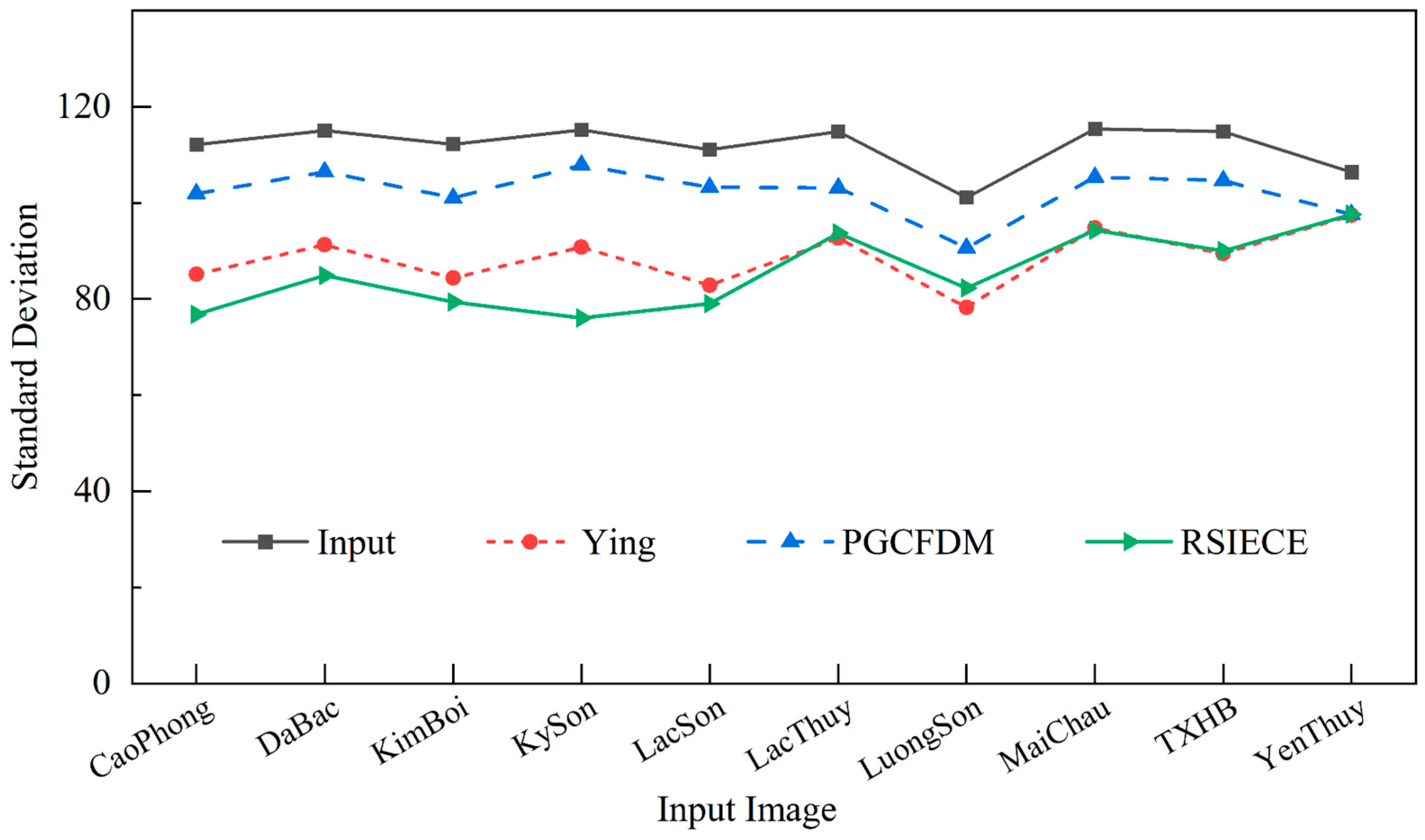
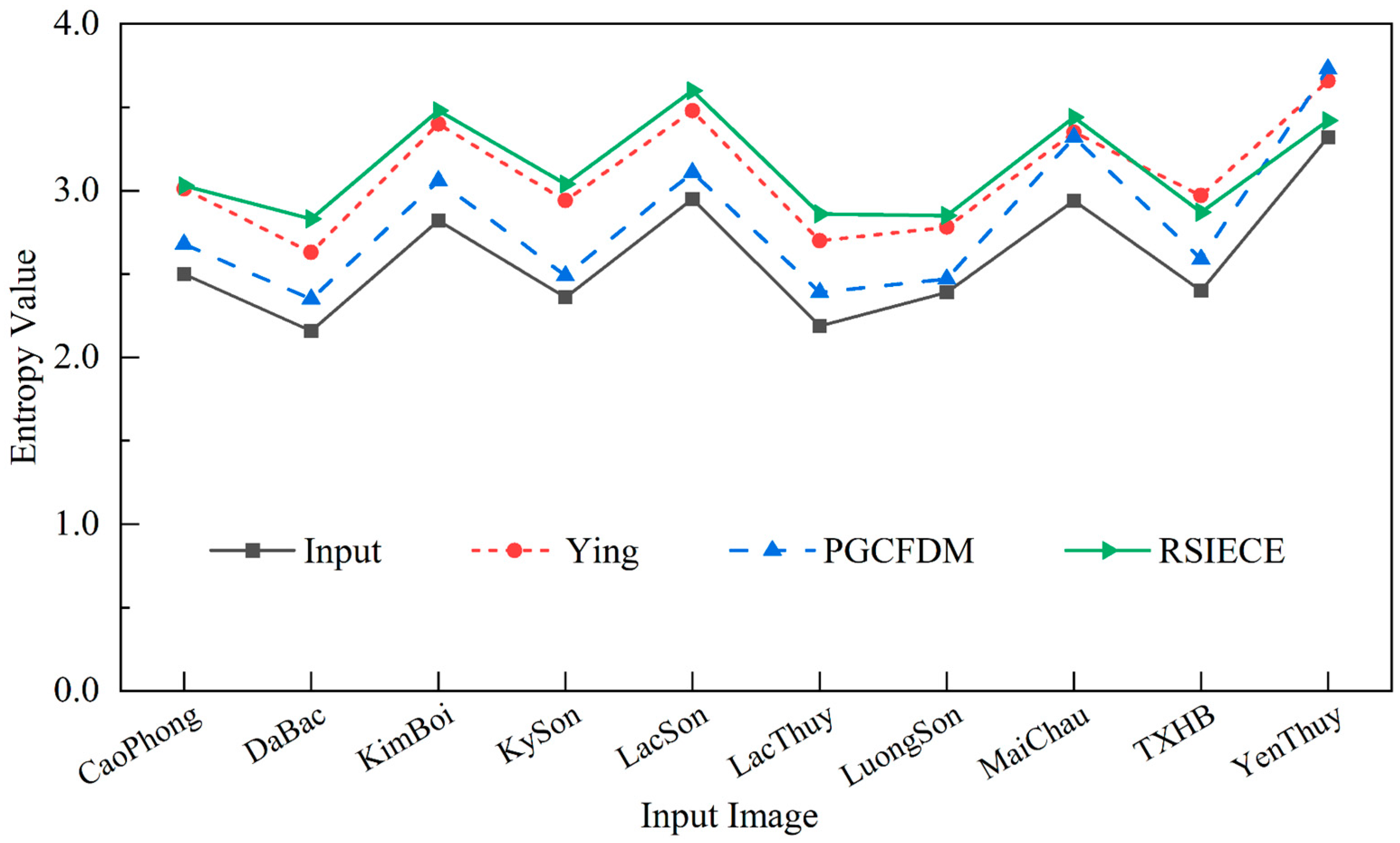
| No. | Loca. | Input | Ying Method | PGCFDM Method | RSIECE Algorithm |
|---|---|---|---|---|---|
| 1 | CaoPhong (598 × 505) | 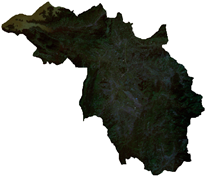 | 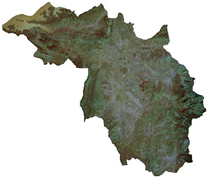 | 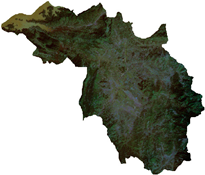 |  |
| 2 | DaBac (769 × 640) | 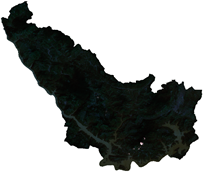 | 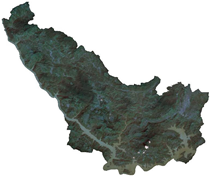 |  |  |
| 3 | KimBoi (672 × 640) |  |  | 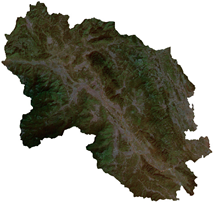 | 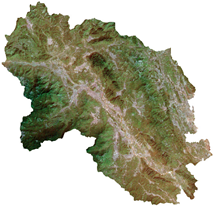 |
| 4 | KySon (363 × 648) | 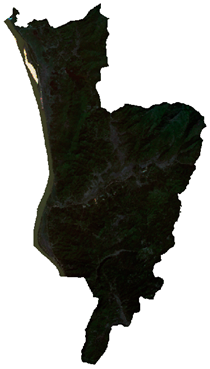 | 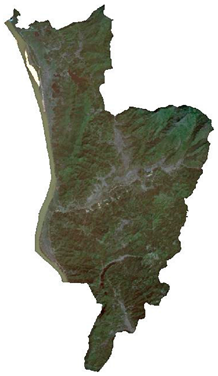 | 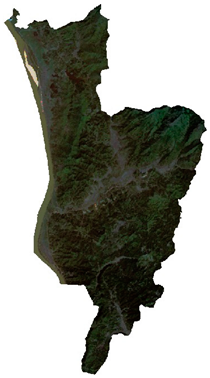 |  |
| 5 | LacSon (703 × 648) |  | 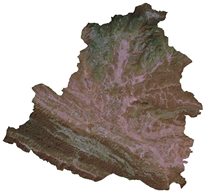 | 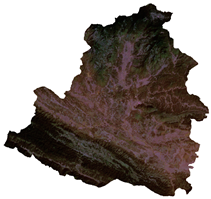 |  |
| 6 | LacThuy (633 × 647) | 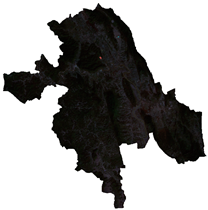 |  | 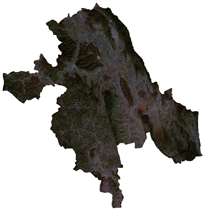 | 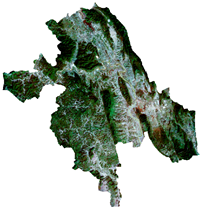 |
| 7 | LuongSon (614 × 648) | 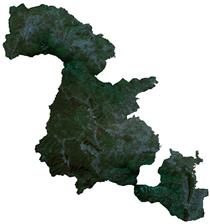 | 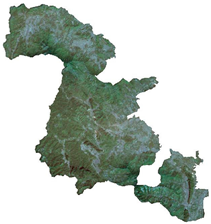 |  | 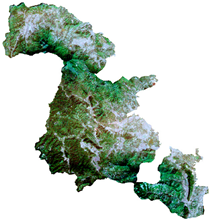 |
| 8 | MaiChau (799 × 648) | 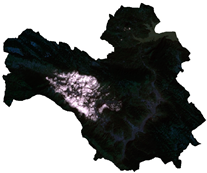 | 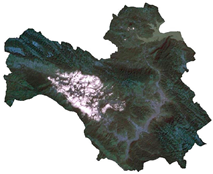 | 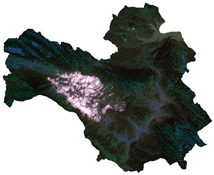 | 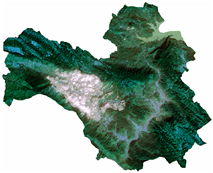 |
| 9 | TXHB (378 × 648) | 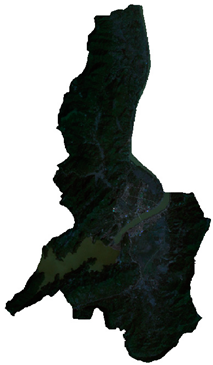 | 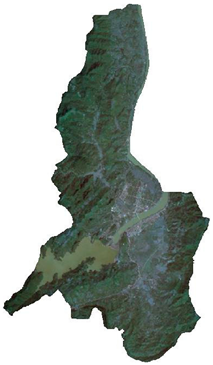 |  |  |
| 10 | YenThuy (478 × 648) | 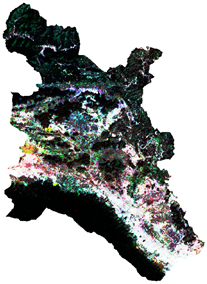 | 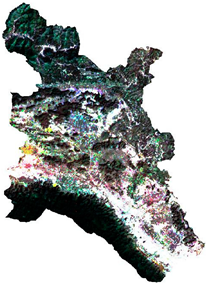 | 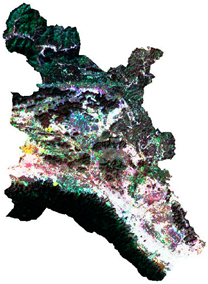 |  |
| No. | Location | Input | Ying Method | PGCFDM Method | RSIECE Algorithm |
|---|---|---|---|---|---|
| 1 | CaoPhong | 149.52 | 175.52 | 159.74 | 186.39 |
| 2 | DaBac | 155.61 | 176.41 | 163.30 | 187.17 |
| 3 | KimBoi | 125.20 | 158.29 | 138.76 | 167.90 |
| 4 | KySon | 146.77 | 169.95 | 154.09 | 188.18 |
| 5 | LacSon | 126.81 | 160.77 | 137.10 | 170.85 |
| 6 | LacThuy | 157.11 | 176.30 | 167.42 | 181.34 |
| 7 | LuongSon | 171.82 | 191.05 | 180.83 | 194.48 |
| 8 | MaiChau | 129.48 | 153.59 | 140.62 | 156.71 |
| 9 | TXHB | 148.63 | 172.59 | 158.46 | 174.14 |
| 10 | YenThuy | 160.94 | 172.81 | 171.10 | 171.84 |
| No. | Location | Input | Ying Method | PGCFDM Method | RSIECE Algorithm |
|---|---|---|---|---|---|
| 1 | CaoPhong | 112.14 | 85.13 | 101.90 | 76.81 |
| 2 | DaBac | 115.03 | 91.29 | 106.43 | 84.86 |
| 3 | KimBoi | 112.19 | 84.34 | 101.07 | 79.36 |
| 4 | KySon | 115.19 | 90.83 | 107.82 | 76.02 |
| 5 | LacSon | 111.12 | 82.85 | 103.28 | 79.02 |
| 6 | LacThuy | 114.81 | 92.68 | 103.16 | 93.74 |
| 7 | LuongSon | 101.09 | 78.26 | 90.62 | 82.29 |
| 8 | MaiChau | 115.43 | 94.77 | 105.37 | 94.30 |
| 9 | TXHB | 114.81 | 89.49 | 104.66 | 90.00 |
| 10 | YenThuy | 106.41 | 97.45 | 97.62 | 97.61 |
| No. | Location | Input | Ying Method | PGCFDM Method | RSIECE Algorithm |
|---|---|---|---|---|---|
| 1 | CaoPhong | 2.50 | 3.01 | 2.68 | 3.03 |
| 2 | DaBac | 2.16 | 2.63 | 2.35 | 2.83 |
| 3 | KimBoi | 2.82 | 3.40 | 3.06 | 3.48 |
| 4 | KySon | 2.36 | 2.94 | 2.49 | 3.04 |
| 5 | LacSon | 2.95 | 3.48 | 3.11 | 3.60 |
| 6 | LacThuy | 2.19 | 2.70 | 2.39 | 2.86 |
| 7 | LuongSon | 2.39 | 2.78 | 2.47 | 2.85 |
| 8 | MaiChau | 2.94 | 3.35 | 3.32 | 3.44 |
| 9 | TXHB | 2.40 | 2.97 | 2.59 | 2.87 |
| 10 | YenThuy | 3.32 | 3.66 | 3.73 | 3.42 |
| No. | Location | Input | Ying Method | PGCFDM Method | RSIECE Algorithm |
|---|---|---|---|---|---|
| 1 | CaoPhong | 37.10 | 33.83 | 34.16 | 27.04 |
| 2 | DaBac | 37.06 | 30.54 | 30.82 | 26.14 |
| 3 | KimBoi | 35.33 | 29.76 | 32.80 | 27.50 |
| 4 | KySon | 41.08 | 37.24 | 38.04 | 36.95 |
| 5 | LacSon | 34.62 | 30.43 | 31.25 | 27.32 |
| 6 | LacThuy | 34.19 | 30.59 | 33.44 | 28.90 |
| 7 | LuongSon | 32.69 | 30.38 | 32.24 | 29.53 |
| 8 | MaiChau | 24.84 | 24.87 | 24.87 | 22.69 |
| 9 | TXHB | 38.65 | 32.90 | 34.52 | 31.25 |
| 10 | YenThuy | 37.19 | 34.03 | 34.09 | 34.03 |
Disclaimer/Publisher’s Note: The statements, opinions and data contained in all publications are solely those of the individual author(s) and contributor(s) and not of MDPI and/or the editor(s). MDPI and/or the editor(s) disclaim responsibility for any injury to people or property resulting from any ideas, methods, instructions or products referred to in the content. |
© 2023 by the authors. Licensee MDPI, Basel, Switzerland. This article is an open access article distributed under the terms and conditions of the Creative Commons Attribution (CC BY) license (https://creativecommons.org/licenses/by/4.0/).
Share and Cite
Trung, N.T.; Le, X.-H.; Tuan, T.M. Enhancing Contrast of Dark Satellite Images Based on Fuzzy Semi-Supervised Clustering and an Enhancement Operator. Remote Sens. 2023, 15, 1645. https://doi.org/10.3390/rs15061645
Trung NT, Le X-H, Tuan TM. Enhancing Contrast of Dark Satellite Images Based on Fuzzy Semi-Supervised Clustering and an Enhancement Operator. Remote Sensing. 2023; 15(6):1645. https://doi.org/10.3390/rs15061645
Chicago/Turabian StyleTrung, Nguyen Tu, Xuan-Hien Le, and Tran Manh Tuan. 2023. "Enhancing Contrast of Dark Satellite Images Based on Fuzzy Semi-Supervised Clustering and an Enhancement Operator" Remote Sensing 15, no. 6: 1645. https://doi.org/10.3390/rs15061645
APA StyleTrung, N. T., Le, X.-H., & Tuan, T. M. (2023). Enhancing Contrast of Dark Satellite Images Based on Fuzzy Semi-Supervised Clustering and an Enhancement Operator. Remote Sensing, 15(6), 1645. https://doi.org/10.3390/rs15061645








